If you had asked me, two weeks ago, if my bonsai were healthy and insect free, I would have said yes. At a glance, they all looked great. Looking closer, however, I discovered that one of my pines looked dirty.
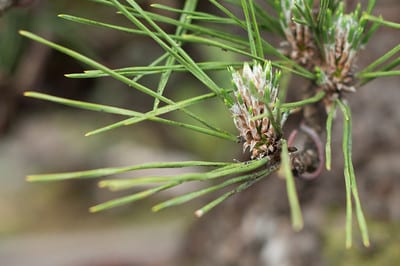
Some dirt on the needles – this must mean…
Aphids! Aphids are most commonly found on bonsai with tender foliage, but they are not averse to feeding on pine. Fortunately, they’d only decided to inhabit one of my pines (and I can’t begin to guess why they chose the pine they did as it was surrounded by other pines that were completely free from aphids).
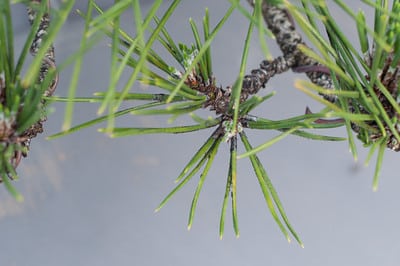
Aphids hanging out between needles
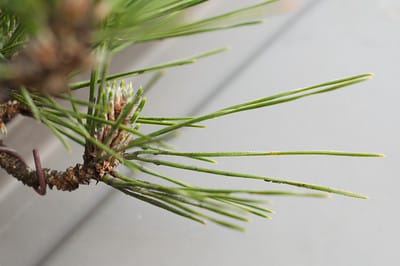
More aphids
Although they deserve swift attention, aphids are relatively easy to spot and eradicate – unlike the far more pernicious pine needle scale. I typically alternate between a variety of pesticides, oils, and soaps when I discover bonsai pests. After spraying, I watch affected trees closely to make sure the critters are truly dead and gone.
With the happy-go-lucky aphids under control, I took a closer look at selected trees in my garden only to find that my prime nemesis of late, the worm – master of camouflage and capable of munching every last variety in my backyard – has yet to vacate the premises. I plucked three from a hinoki that I’ve been spraying regularly for 6 months. I upped the dosage of systemic the tree has been receiving and promised myself I’d inspect the foliage more often. The worm’s camouflage makes it uncannily similar to the shoots it eats.
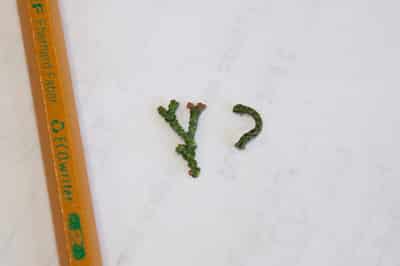
Tiny, well-camouflaged worm and hinoki shoot
These demented creatures even ventured to munch on my pines last summer. I’d never seen worms eat pine shoots before, but I’m determined to keep this from becoming a habit. (I wrote about them eating juniper shoots in “Juniper Pests.”)
A far more common foe to the pine is the tiny spider mite. They aren’t much to look at, but signs of their presence are unmistakable. Compare the fresh green needles in the photo below with the longer, yellowish needles from last year.
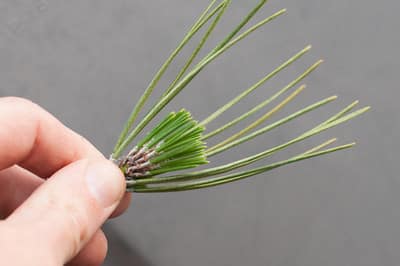
Spider mite damage
Spider mites like hot and dry conditions. They prey on weak trees before healthy ones, but if the conditions are right, they can cause significant damage to any pine in a matter of days. A haunting tidbit from Wikipedia: “A single mature female can spawn a population of a million mites in a month or less.” Yuck!
A simple test utilizing low tech equipment – 1 sheet of white paper – is a good way to spot spider mites:
- Hold sheet of white paper below a branch
- Tap the branch
- Inspect the tiny specs that fall onto the paper
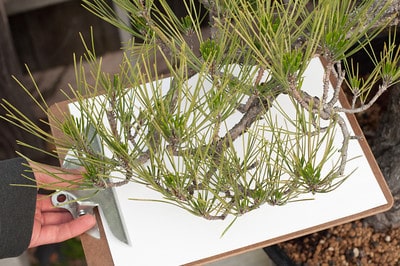
1. Tap the branch over white sheet of paper
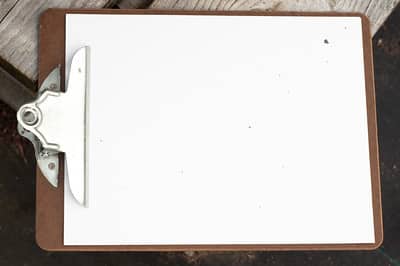
2. Check for mites
Before running out to check for bugs, I recommend you read Peter Tea’s account of Aichi-en’s battle against the bugs, “I love the smell of pesticides in the morning.”
Subscribe to Bonsai Tonight
New Posts Delivered Every Tuesday and Friday
Mac says
I found one of those dang worms on one of my American Beech trees yesterday. There were a couple of leaves near the top that were all curled up in a ball. I cut them off and smashed them and there was some kind of goop inside that must have been worms or worm eggs of some kind. Further down the tree sticking out from a limb was a branch that I knew shouldn’t be on the tree. Just a stub about an inch long, slightly different color of gray than the limb it was attached to. I touched it with my finger and it was very soft. I pulled and off came a worm. Darn thing was just hanging out there looking like it was part of the tree. Even the end that was attached to the branch looked natural the way it blended in to the surface.
Jonas Dupuich says
@ Mac – Those larger worms are awful – they look just like branches. I haven’t taken photos of them because I’m too keen on smashing them. Here’s hoping they don’t come back.